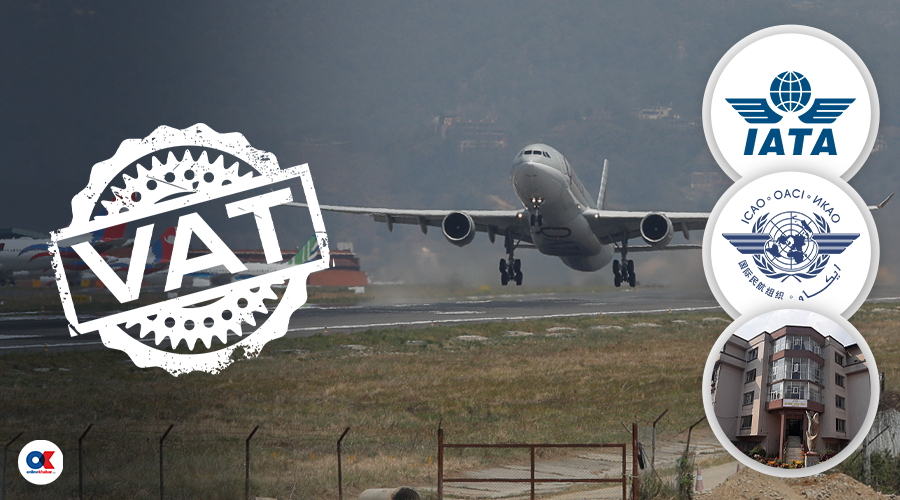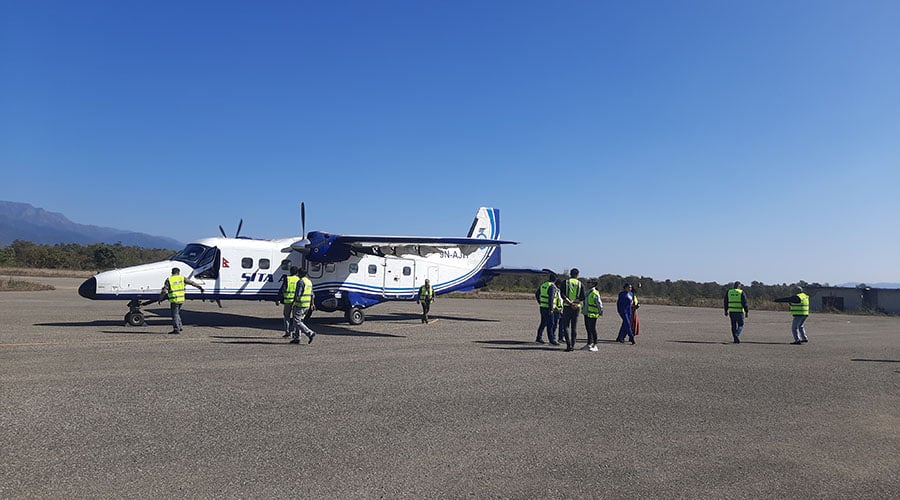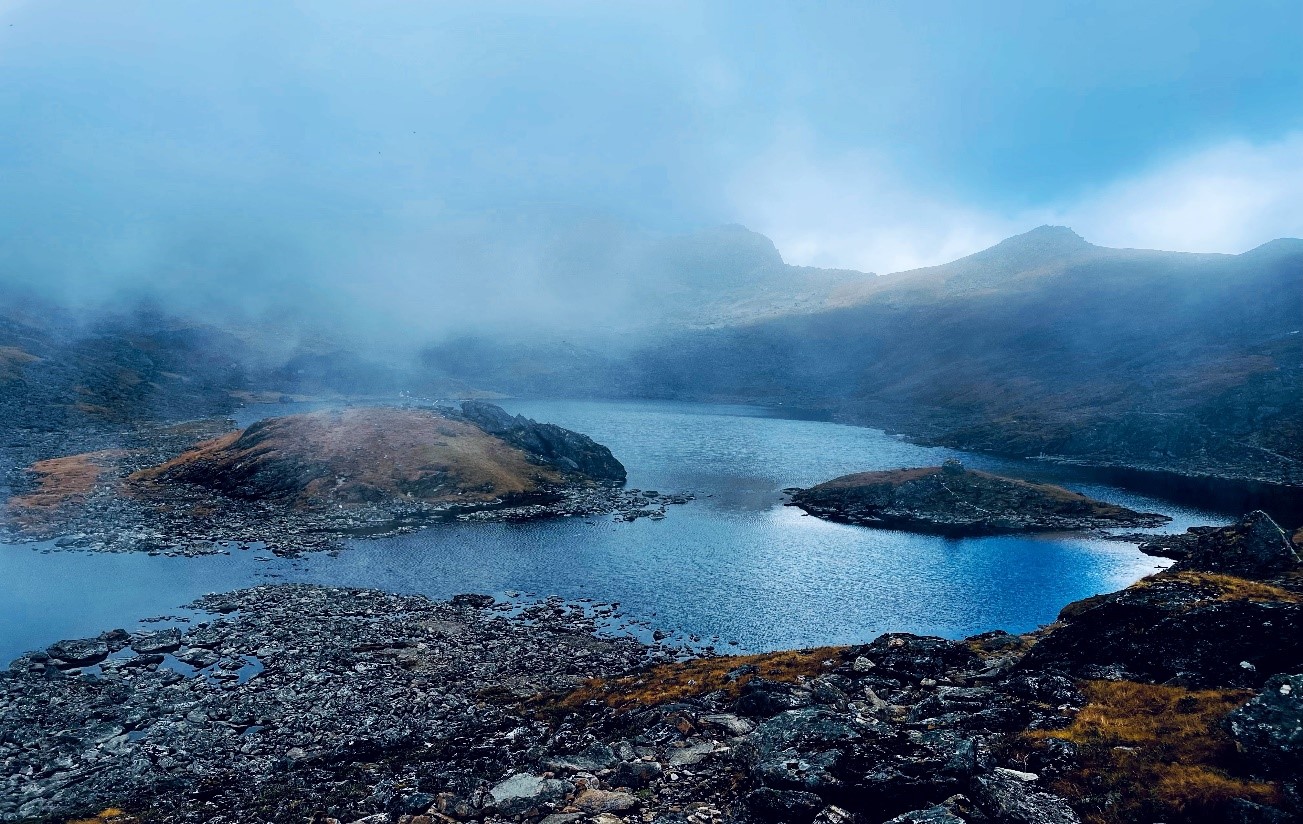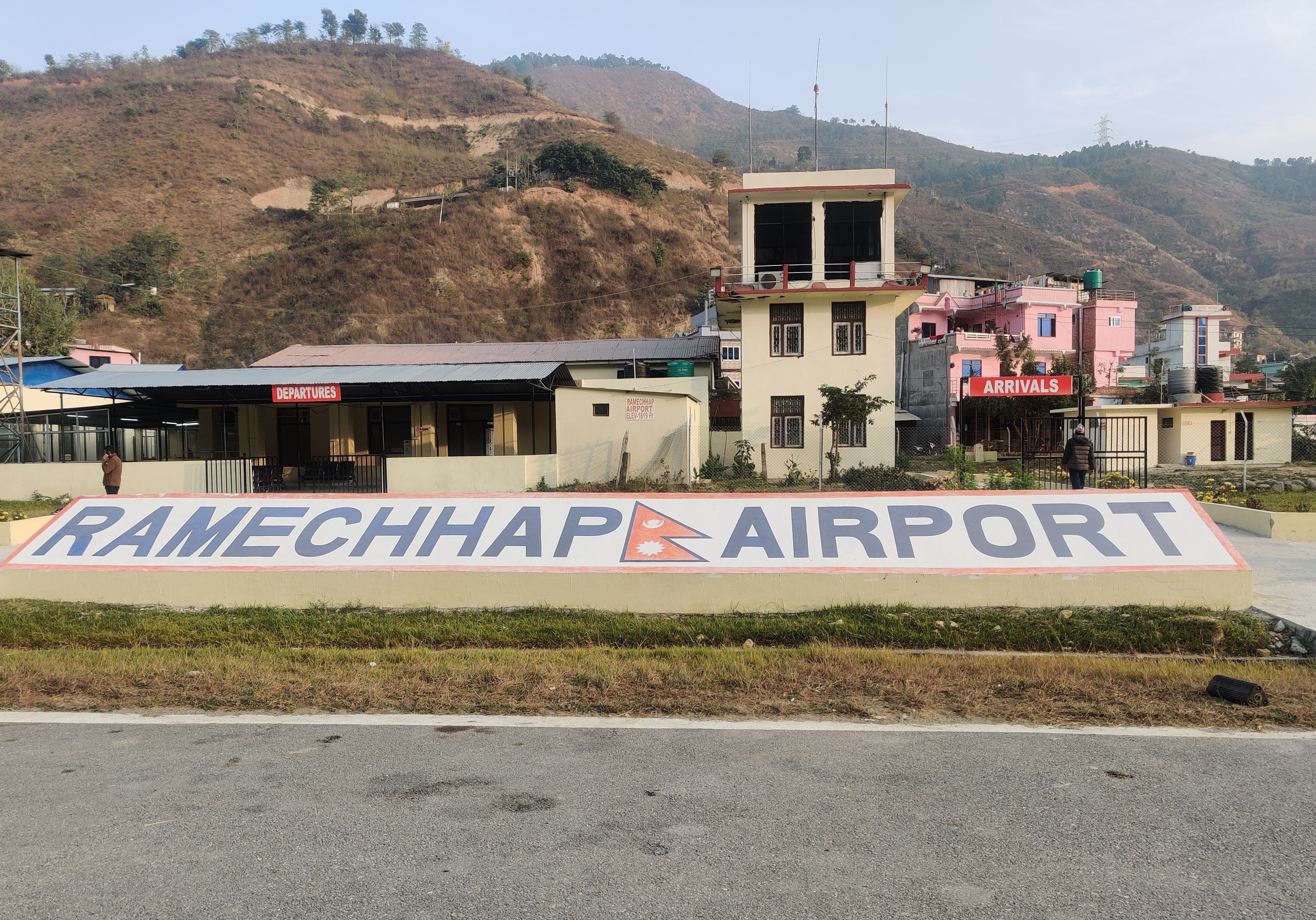
Every year, hundreds of mountaineers arrive with the dream of summiting the world’s highest mountain, Everest. A thousand others come to trek to Everest Base Camp, revelling in the breathtaking scenery. To embark on this journey, they must first reach the gateway to Everest—Lukla which is home to one of the most dangerous airports in the world. The nerve-wracking part of their adventure begins with a 17-minute flight from Ramechhap Airport to Lukla.
During peak tourist season between March to May and September to November, Ramechhap Airport operates at its maximum capacity, handling around 120 daily flights (to and fro) and helicopter trips catering to about 2,000 tourists daily.
The airport and the entire town of Manthali, where the airport is located, experience a surge in activity during the peak season, sometimes leading to overcrowding. The waiting room often faces this issue and the airport staff find it challenging to manage the increased traffic effectively. However, post-tourist season, the airport remains deserted, as it has never been active. There is an eerie silence on the runway, reminiscent of the tranquil flow of the adjacent Tama Koshi river, with its calm turquoise waters.
The locals and businesses in Manthali now want the local government to do most as they say the airport holds significant untapped potential but is currently underutilised and overlooked beyond the trekking season.
Gateway to Lukla
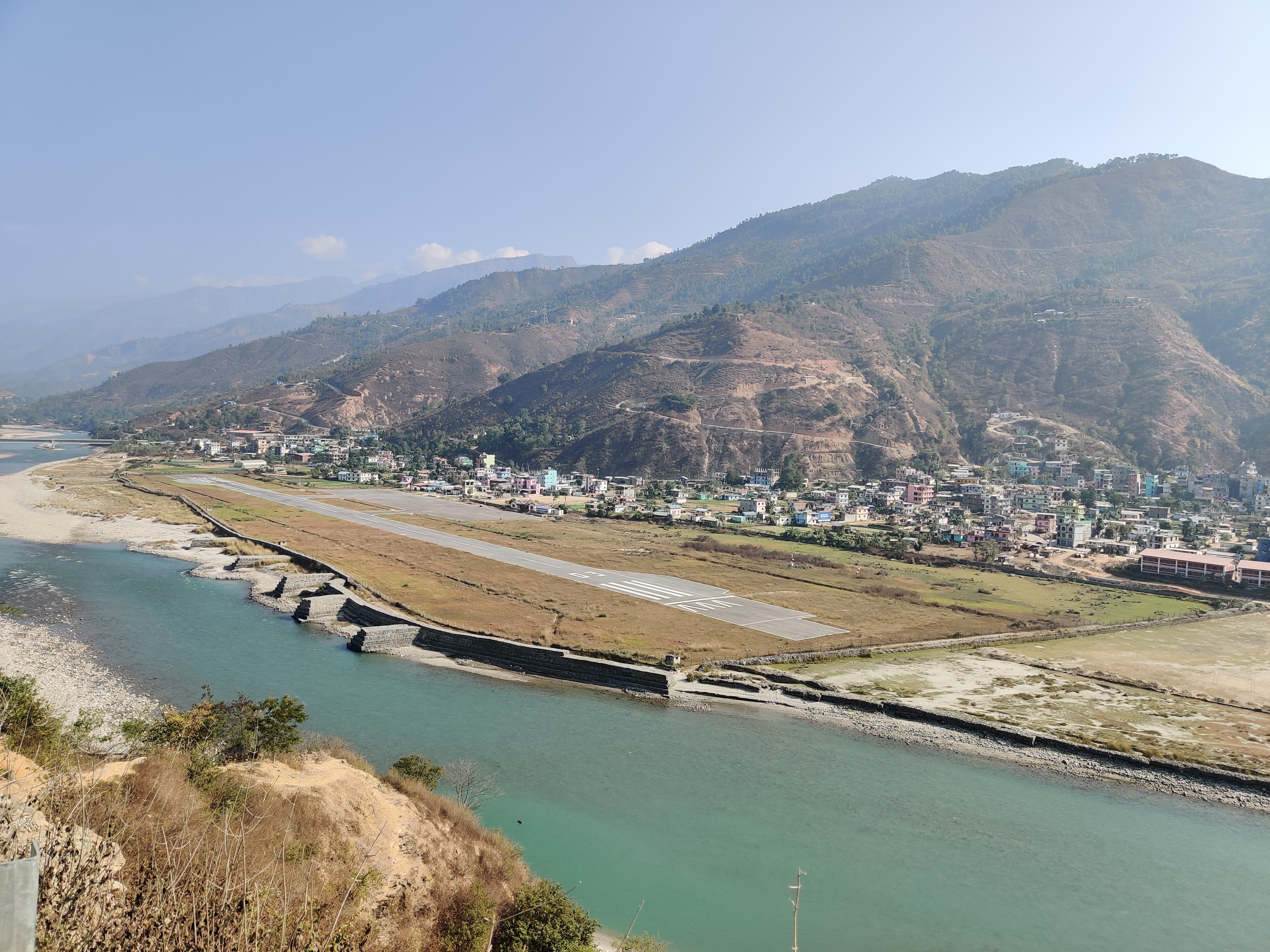
Open for operations in 1979, Ramechhap Airport initially connected Manthali to Kathmandu and subsequently to Janakpur. With no road access, the airport became came as a boon to the locals.
After roads were built around the area, the airport became an afterthought. However, in October 2013, the Civil Aviation Authority of Nepal (CAAN) started to conduct Lukla flights from Manthali to ease the air traffic in Kathmandu. The number went significantly higher after 2019 which marked a turning point for Ramechhap Airport, transforming it into a pivotal transit point for tourists headed to Lukla.
Although travellers bound for Lukla currently face a four-hour car ride to reach Manthali, the flight distance has been nearly halved as it only takes 17 minutes to reach Lukla.
“We only resumed Lukla flights this year after a lull caused by the Covid-19 pandemic. It was very busy, with Tara Air, Sita Air, and Summit Air collectively operating 10 flights a day,” says Gyanendra Bhul, joint spokesperson at CAAN.
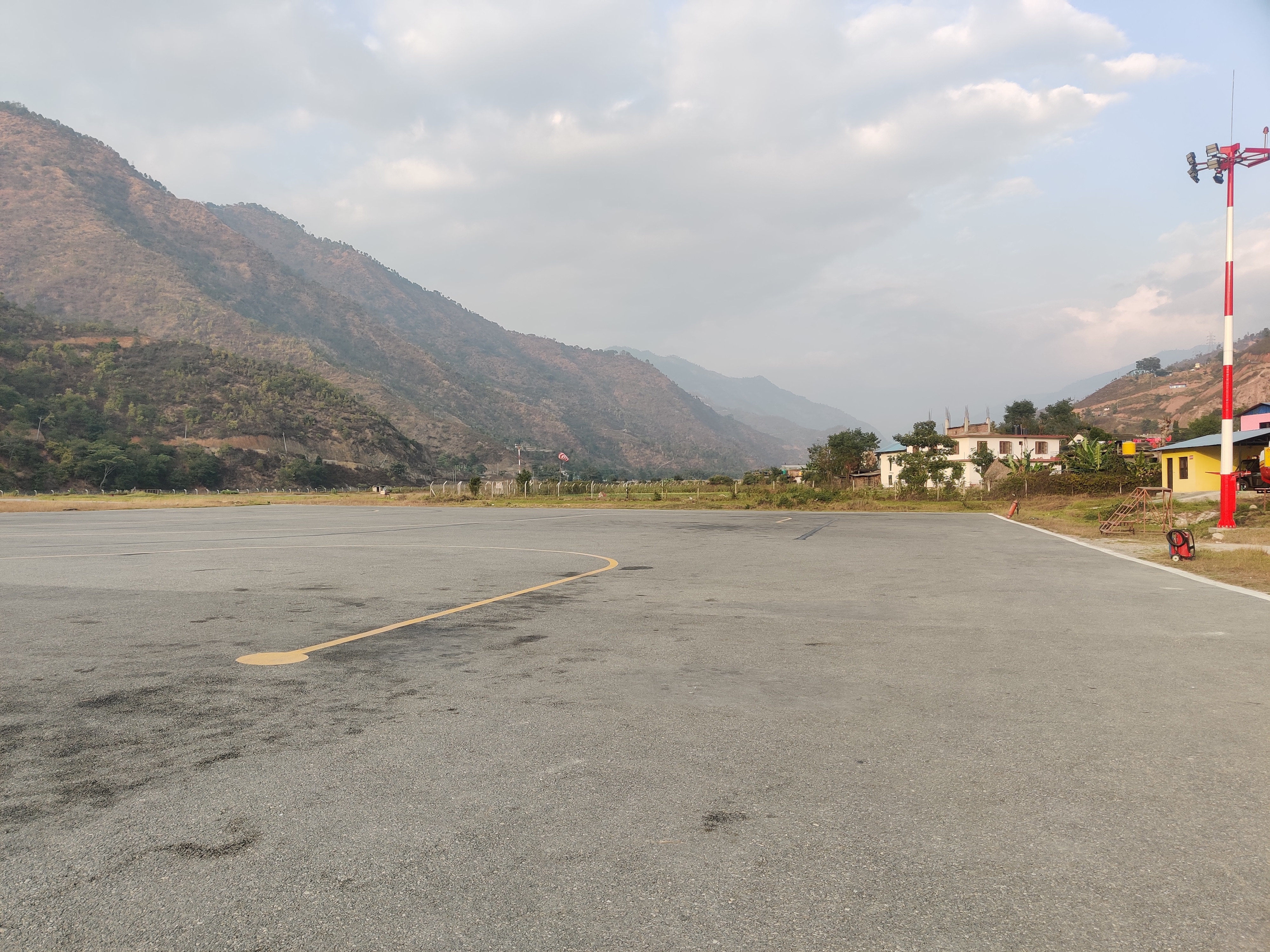
On any given day during the trekking season, tourists are a common sight in the Manthali area, including the bus station and airport areas. The place gets so busy, that some even pitch up tennts in and around the airport areas to catch the morning flight to Lukla.
However, once the season ends, and flights to Luklac come to a halt, Ramechhap Airport sees near-zero traffic. The runway stays deserted with aeroplanes a rarity during the off-season. Despite this, the airport remains operational, maintaining a minimal staff for potential emergency landings or diversions that other flights might need to undertake. Additionally, the airport serves as a runway for test or practice flights and drills, according to officials.
Lost opportunities

While Lukla flights from Manthali has made life easy for the Tribhuvan International Airport, the life of the locals of Manthali, however, has not changed as much as they thought it would.
Despite its strategic importance, Ramechhap Airport faces operational challenges and serves as a testament to many lost opportunities, say the local hoteliers and businesspeople.
The influx of tourists using Lukla-bound flights brought about a surge in several hotel businesses in Manthali. In response to the seasonal demand, locals opened guest houses, hotels, and resorts. However, despite the apparent growth in numbers, hoteliers and traders express grave dissatisfaction that the airport remains heavily sidelined and ignored.
We have requested the authorities and the airlines to expand their flights from Manthali to other destinations so that even in the off-season, the airport and the tourism and hotel business in the area can benefit from it, but it has all gone to deaf ears,” says Pawan Kathayat owner of Manakamana Hotel in Manthali.
He says that their investments are not being valued, pointing out that even during the peak trekking season, individuals often opt to drive to Manthali from Kathmandu early in the morning instead of staying overnight.
Another business operator Shyam Thapa puts this on travel companies who rush their clients from Kathmandu in the early hours with packed breakfast.
“They come in vans and SUVs and fly to Lukla directly. We will not benefit when this happens,” says Thapa. “Only 0.1 per cent of tourists stay overnight in Manthali.”
Thapa even goes on to say how the airport has not created employment either.
“The road has done more to Manthali than this airport has,” he says.
The only time the town sees people is when there is poor weather. This forces people to stay in Manthali waiting for the weather to clear up.
“Ramechhap is taken solely as a transit point. Tourists only spend a night here when they are desperate. Most look for cheap hotels and space here and any failure to cater to them leads to the bad reputation of Manthali and Ramechhap as a whole, which is very disappointing to hear,” says Thapa.
Despite being operational, Ramechhap Airport remains practically inactive for a significant portion of the year, much like the other 18 airports in Nepal.
Correcting the course

Hoteliers and businesspersons advocate for a much-needed shift in tourism practices. They say it was time the government and travel companies considered offering better packages to the tourists encouraging them to spend a night in the town, at the very least.
“The flights to Lukla are all in the morning. This means if the tourists come to Manthali a day earlier, they spend the night here, they get to explore Manthali and some locally famous landmarks here,” says Thapa.
CAAN, however, says all they can do is give the airport flights and the rest is up to the traveller and the agencies they use.
Hoteliers say that connecting the flights will not immediately solve their problems, it requires more affordable and sustainable solutions. They call on the government to study and invest more in tourism and create a market for local produce like dairy.
Also, another untapped potential is the Tama Koshi River which locals believe could be used for rafting and other adventure tourism-related activities.
“We tried for a certain time, but seems like they don’t seem to care,” says Thapa.
Nevertheless, to correct the course, the hoteliers in Ramechhap echo that there is a pressing need for reevaluating the airport’s role beyond being a mere transit point.
The district of Ramechhap grapples with geographical challenges, primarily characterised by the rugged terrain and surrounding hills. This means bigger aeroplanes cannot be diverted here. But, after the renovation, the smaller ones including Twin Otters, donniers and Let 410, can be started, increasing Ramechhap’s two-way connectivity to other districts.
“Initiatives to enhance Ramechhap’s connectivity with Kathmandu and other destinations, throughout the year, could unlock untapped potential. Operating regular flights between Ramechhap and Kathmandu, at the very least, could alleviate the top-down approach we see today and even offer a viable business and travel alternative for the locals in the region,” says Kathayat.
Bhul from CAAN said they tried to operate Kathmandu-Ramechhap flights a few times a week.
“It was not commercially viable. We have to depend on private airlines to run the flights, and they need 70 per cent of the load to cover the cost. Unless they do that, they will never fly there,” says Bhul.
He adds that CAAN is aware of the complaints and assures that if given the viability, they will divert the flights as needed.








